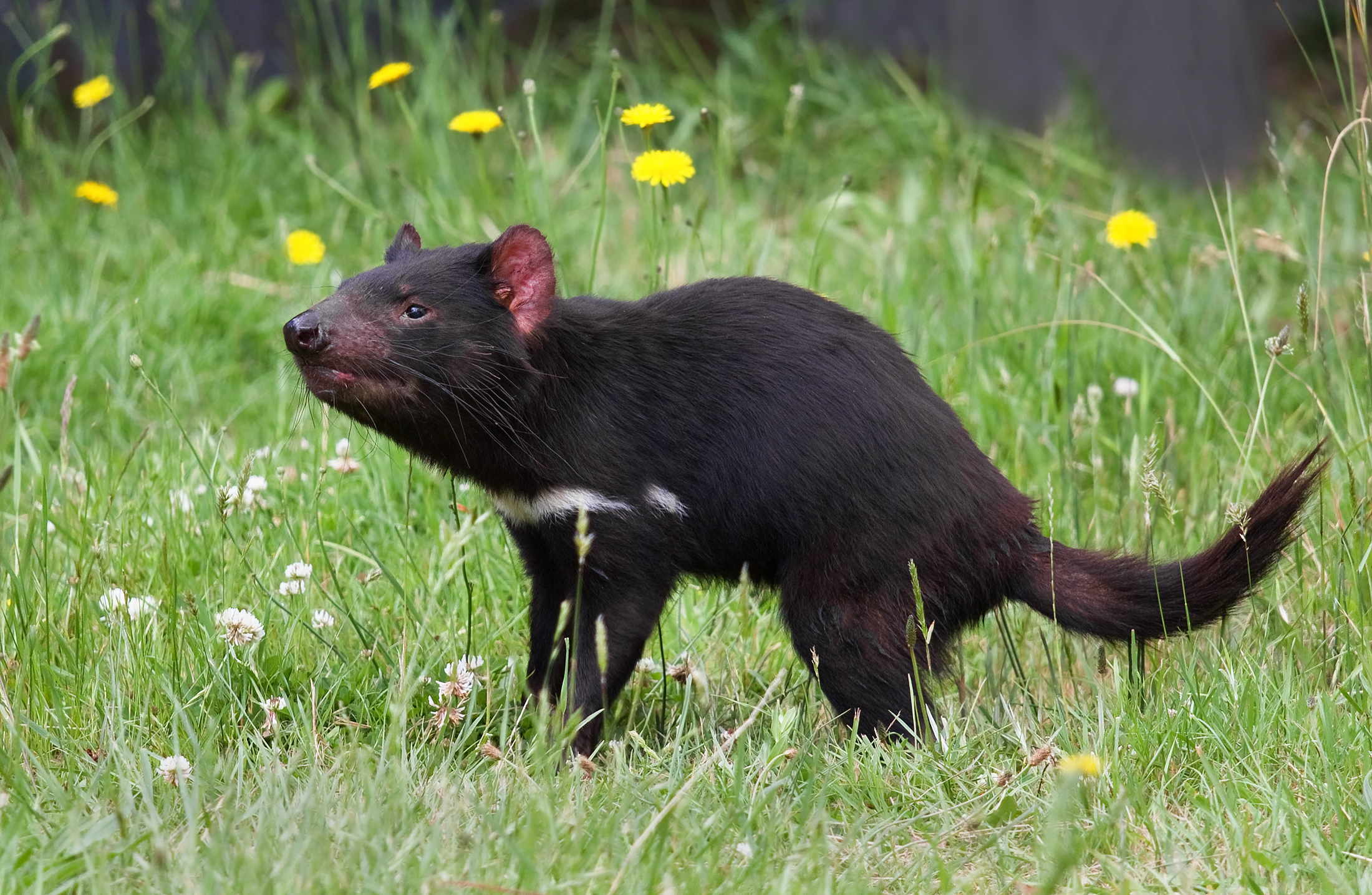The Plight of Tasmanian Devils
The rising plight of the Tasmanian devil has preservationists scrambling to find solutions. A nasty cancer-causing mutation has already wiped out 84 percent of the species, leaving only 35,000 devils remaining in the wild. Traditionally isolated to the lush, verdant island of Tasmania just off the coast of Australia, scientists have transplanted a group of cancer-free devils to Maria Island, providing a non-cancerous environment for the marsupials to thrive while we work on a vaccine to save the species.
Cancer’s high mutation rate makes it difficult to pinpoint which rewrite ignited the epidemic. And with around 20,000 different mutations which share no commonality with non-infected Tasmanian DNA, the search may take considerable time. When we trace this long mutation history backward, we converge upon an origin date of the late 1990s. So this contagion has been tormenting pockets of devils for the last twenty years.
Extraordinarily, the cancer is parasitic, using its host as a vector. “Contagious cancer” is almost unheard of, but in Tasmanian devils it works straightforwardly enough. The animals are fond of fighting one another, and these bouts usually involve biting the face of the opponent, providing a seamless entry point for the contagion to spread to new nests. Once transmitted, the tumors swell to enormous size on the faces of their hosts, usually killing the host in a matter of months.
Epidemiologists are attempting to suppress the infection using a similar approach to the smallpox eradication: isolating the infected from the uninfected and administering the vaccine to as many individuals as is economically possible. Maria Island is the chosen site of renewal for this species. If either we develop a cure or the remaining infected die, the safety population could then be reintroduced to Tasmania.
Like smallpox, this infection only affects one species (as far as we know), so we do not at the moment need to harbor concern that it could lay dormant in one species and then jump back across the species barrier to Tasmanian devils at a future date.
But as always, we are fighting against the clock of evolution.
“But Dr. Kreiss warns that with 35,000 devils left in the wild, no vaccine can be a panacea. “Even if we had a perfect vaccine, we’d probably have to vaccinate every animal more than once,” he said. “I don’t see us doing that for the whole population.”
External link: Raising Devils in Seclusion
Feature image courtesy of Wikimedia user JJ Harrison



Comments